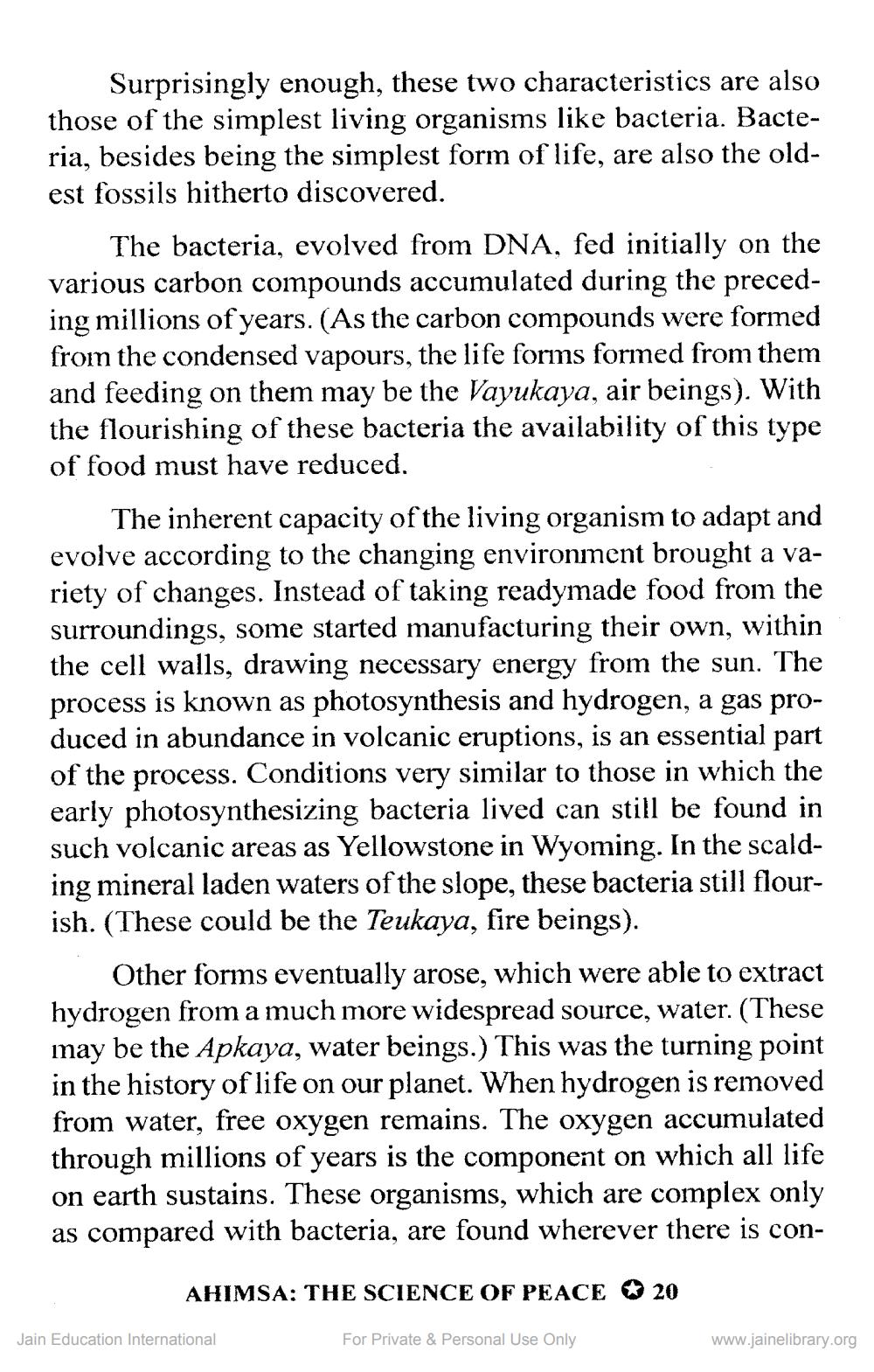________________
Surprisingly enough, these two characteristics are also those of the simplest living organisms like bacteria. Bacteria, besides being the simplest form of life, are also the oldest fossils hitherto discovered.
The bacteria, evolved from DNA, fed initially on the various carbon compounds accumulated during the preceding millions of years. (As the carbon compounds were formed from the condensed vapours, the life forms formed from them and feeding on them may be the Vayukaya, air beings). With the flourishing of these bacteria the availability of this type of food must have reduced.
The inherent capacity of the living organism to adapt and evolve according to the changing environment brought a variety of changes. Instead of taking readymade food from the surroundings, some started manufacturing their own, within the cell walls, drawing necessary energy from the sun. The process is known as photosynthesis and hydrogen, a gas produced in abundance in volcanic eruptions, is an essential part of the process. Conditions very similar to those in which the early photosynthesizing bacteria lived can still be found in such volcanic areas as Yellowstone in Wyoming. In the scalding mineral laden waters of the slope, these bacteria still flourish. (These could be the Teukaya, fire beings).
Other forms eventually arose, which were able to extract hydrogen from a much more widespread source, water. (These may be the Apkaya, water beings.) This was the turning point in the history of life on our planet. When hydrogen is removed from water, free oxygen remains. The oxygen accumulated through millions of years is the component on which all life on earth sustains. These organisms, which are complex only as compared with bacteria, are found wherever there is con
AHIMSA: THE SCIENCE OF PEACE
20
Jain Education International
For Private & Personal Use Only
www.jainelibrary.org




